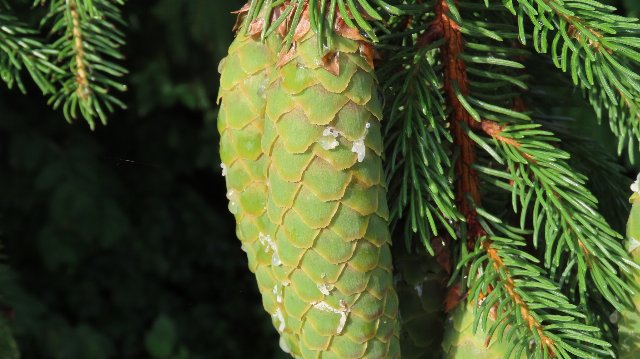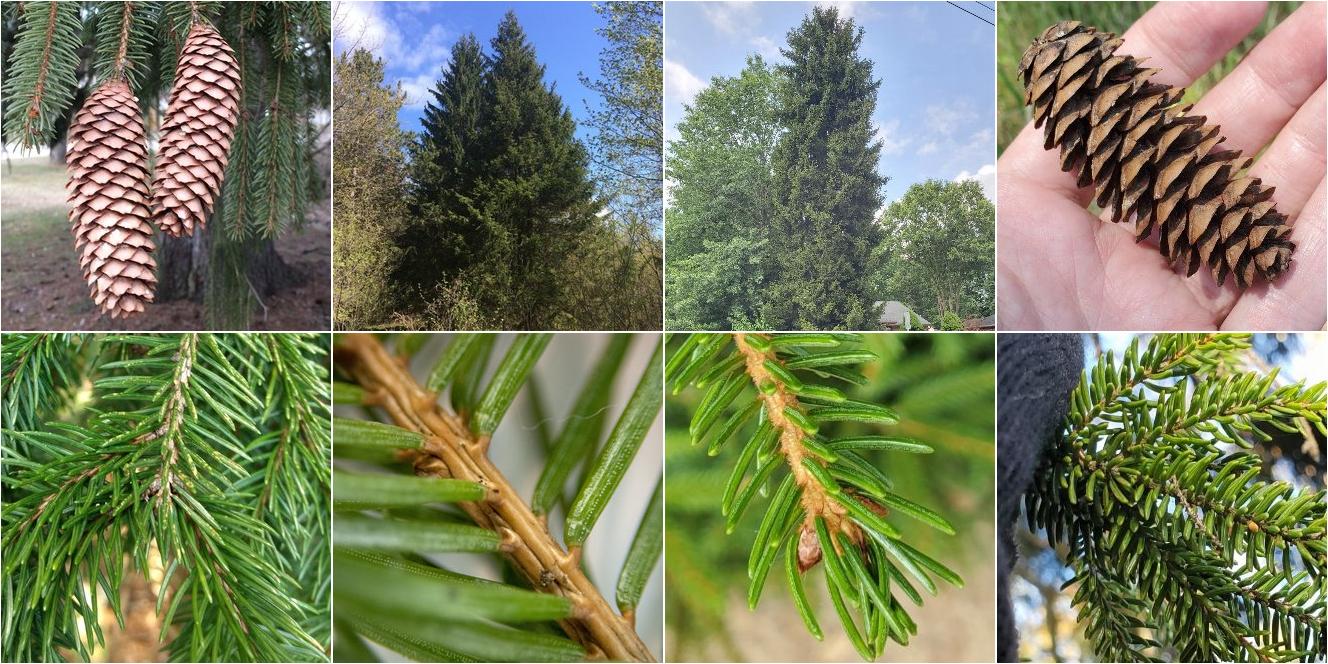Norway Spruce (Picea abies) vs. Caucasian Spruce (Picea orientalis)
Updated January 16th, 2023These two species are easily confused; both are tall and have dark green foliage and similar bark. They are easily told apart by needles and twigs, cones, and form. Both are widely planted in landscaping in Eastern North America, with Norway spruce more common. Norway spruce has widely established in the wild whereas Caucasian spruce has generally not done so. Both species are shade-tolerant; Norway spruce is more tolerant of poor drainage.




